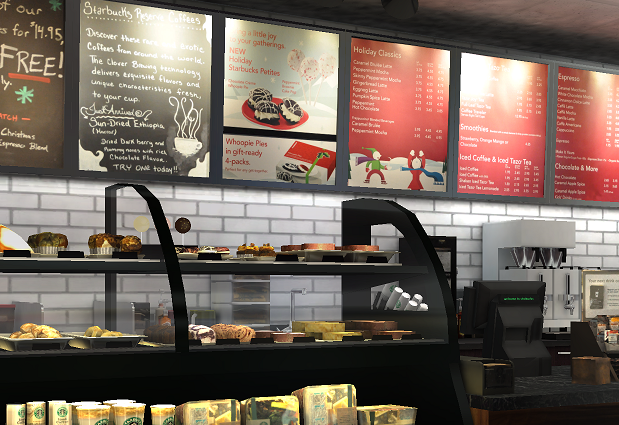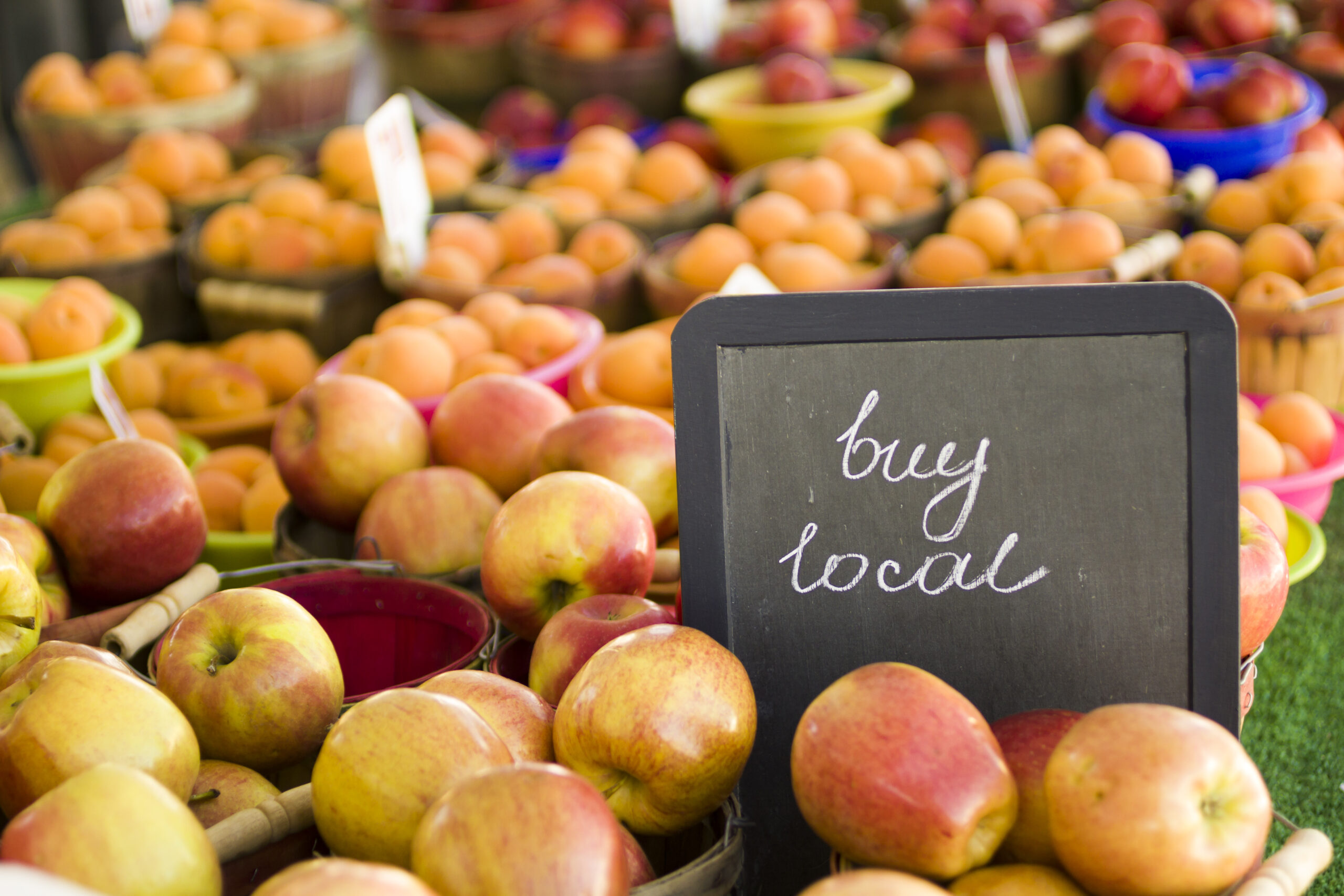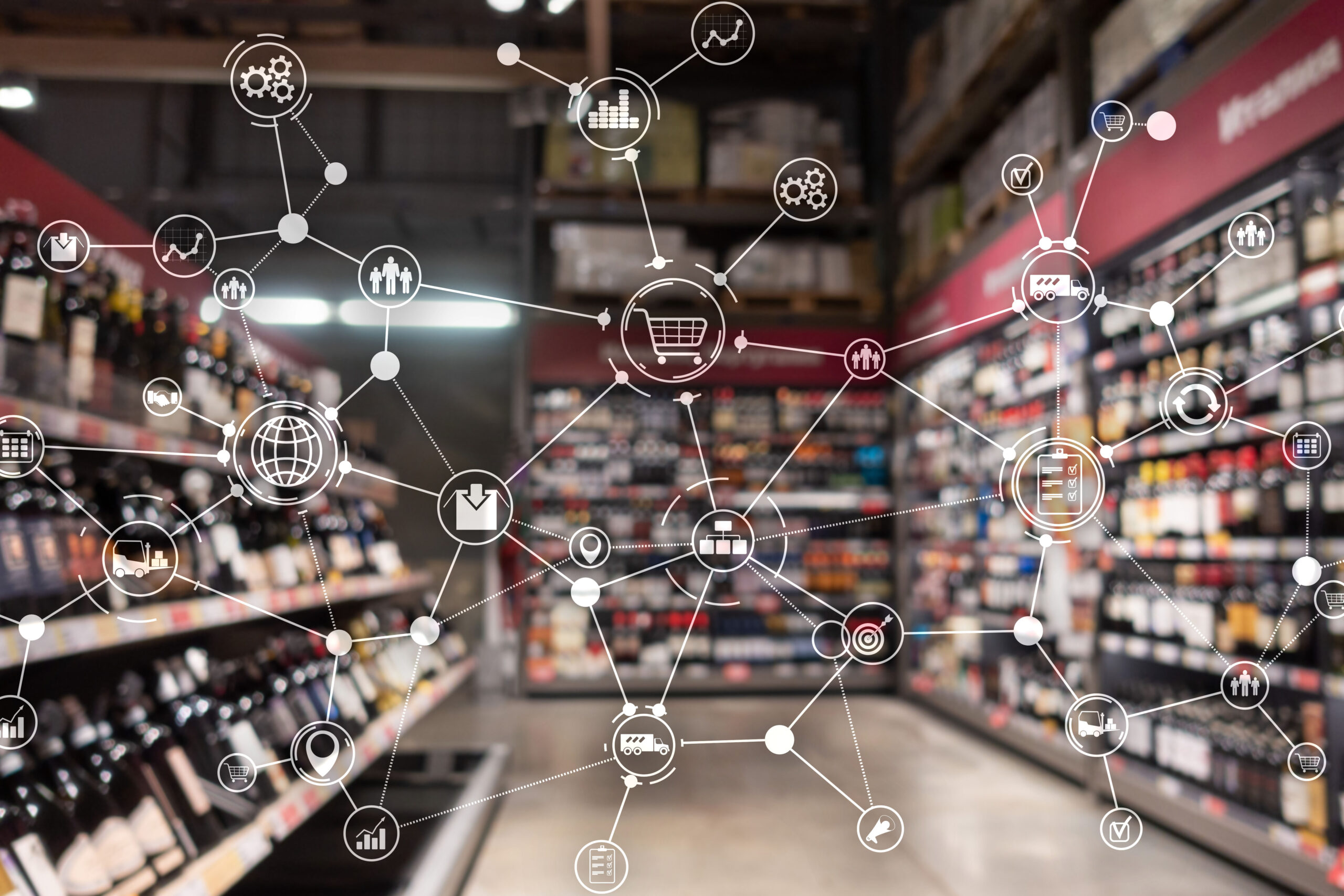Augmented reality is poised to take the world by storm. According to a recent study by eMarketer, 93.3 million people used AR technology at least once a month in 2021. The retail industry is embracing this trend to offer customers new and innovative ways to shop. More specifically, grocery stores can use AR technology to provide shoppers with an enhanced shopping experience.
Throughout this blog, we’re exploring the concept of AR-enabled grocery stores. We’ll discuss ways this technology is being used to improve the customer experience, effectively increasing loyalty and satisfaction.
What is AR?
Before diving into the specifics of how AR is being used in grocery stores, let’s discuss what AR is and how it works. As we’ve previously detailed, Augmented reality (AR) is a technology that adds digital layers to the physical world. Think 3D images, animations, or additional information about an object. This layer can be seen through a device such as a camera-equipped smartphone or tablet.
Augmented reality technology differs from the commonly associated virtual reality (VR). VR creates a fully-digital and immersive 3D environment like you would find in the metaverse. AR, on the other hand, keeps you in the real world. And unlike VR, which requires expensive, specialized equipment (headset,) AR can be accessed with a simple iOS or Android app without additional hardware.
In a grocery store setting, shoppers would pull out their phone camera in-store and engage with the AR experience. It’s essentially the next level of Snapchat filters, with more advanced technology and features that can be customized to meet the needs of any store.
Augmented reality grocery store experiences you should try in 2023
As AR becomes increasingly accessible to the public, grocery stores are beginning to take advantage of it. Here are some of the augmented reality experiences you should expect from the grocery store in 2023:
Personalized shopping experience
According to a recent McKinsey report, grocery shoppers in America are increasingly expectant of personalization and customization since the pandemic. AR technology enables stores to offer shoppers a more tailored shopping experience. An AR app could act as a shopper’s digital concierge. It can provide personalized product recommendations and timely promotions.
For instance, many people have various dietary restrictions. From lactose intolerant to gluten-free, AR can provide pictures and detailed information about in-store products that meet a customer’s dietary needs. This reduces the time it takes customers to find what they are looking for. It also provides accurate and up-to-date real-time information.
Alternatively, someone on a diet might want to limit their sugar intake. They can simply feed that information into an AR app and get tailored product recommendations that meet their dietary needs.
Wayfinding
When Google Maps added augmented reality to its app, it revolutionized the wayfinding experience. Instead of keeping your head down, following a blue line, you simply look up and point your phone toward where you want to go. Digital arrows are superimposed on the camera display, guiding you to your destination.
The same technology can now help shoppers find the products they want in the store. Wayfinding AR apps like the one developed by Dent Reality use store layouts to interactively guide shoppers to the products they seek. All the shopper has to do is enter the product name, and the app will show them exactly where to go.
With clear directions, shoppers no longer have to waste time walking aimlessly around the store or asking store employees for help. If stores want to take things one step further, they can enable customers to enter their entire shopping list. By adding artificial intelligence to the mix, the AR app can then devise the most efficient route around the store to gather all of the items on the list.
This method of shopping results in frictionless grocery experiences. Experiences where the customer can quickly and efficiently find the items they need, saving them both time and hassle. While it might be more useful in a large grocery store, it could also be beneficial for shopping at smaller stores.
Product visualization
Although VR is often considered the poster child of immersive technology, AR can also be used to create immersive experiences. Product visualization is already well-established in the furniture and automotive industries. It uses AR to give customers an up-close and personal look at a product.
One of the most popular use cases is the IKEA app. This app allows customers to virtually place an item in their living space to get a better idea of what it would look like. This same concept can be used for grocery stores as well.
Some grocery stores sell appliances like toasters, coffee makers, and microwaves which are difficult to judge the size of when standing in the store. With an AR app, customers can view the appliance at home before they buy it. They can also evaluate the available space in their fridge or pantry and ensure the item they purchase fits. That’s sure to come in handy when those Thanksgiving turkeys come around!
Product Locator
Shopping lists are infamous for having items that are hard to find. Even if a shopper is familiar with the store layout, they might still struggle to locate a particular product. AR has come to the rescue here too. Using augmented reality apps, shoppers can efficiently locate products and save themselves time.
Additionally, out-of-stock items can be a problem for shoppers and store employees. With AR, shoppers can quickly identify if an item is out of stock without asking someone or searching the back store. This makes it easier for customers to plan ahead and make sure they have all the ingredients they need before leaving the store.
Recommended products
Another key personalization feature AR can provide for grocery stores is product recommendations. Ever wonder why companies like Amazon and Apple are so good at suggesting items you might like? The answer is data. Using the data from customer purchase history and preferences, AR apps can personalize the shopping experience by suggesting products that might interest each shopper.
For example, an app could suggest organic foods for health-conscious subscribers or recommend meat alternatives for vegan shoppers. With the help of AI and machine learning, AR apps can learn from customer preferences and behaviors to deliver products that will interest each user.
These recommendations can also be used for upselling and cross-selling opportunities. Using well-known recipes as inspiration, the app can suggest combination products that make cooking easier, like cream cheese and bagels or the necessary ingredients for Alfredo pasta.
Coupon displays
One of the more inventive ways to use AR in grocery stores is through coupon displays. Instead of printing out paper coupons that can get easily lost, shoppers can view and save digital coupons using an AR app. All they have to do is scan the barcode associated with a product, and relevant coupons will be displayed on their phone.
Often, these digital coupons can be made more attractive than their paper counterpart by including images, videos, and other interactive content. They also don’t suffer from wear and tear like paper coupons, saving the store money on printing costs. Many people depend on coupons for grocery shopping, so this functionality could be a great way to attract more customers. Plus, you don’t have to worry about store workers forgetting to remove expired coupons from shelves.
Digital try-on
An increasing number of grocery retailers are upgrading their offerings to include retail items. Virtual try-on technology can give shoppers a better understanding of what an item will look like on them before buying it. Stores like Walmart and Target lead the charge in this area, but more shops are jumping on the bandwagon now, including e-commerce platforms.
With a smartphone camera, shoppers can digitally try on clothing and even makeup in-store. This practice helps to reduce the need for returns due to poor fitting or wrong colors. It also reduces the time spent trying things on and makes it easier for shoppers to compare different items visually.
Anything from jewelry to clothing, cosmetics, and sunglasses can be virtually tried on. It makes it easier for shoppers to experiment with different looks without committing to a purchase.
Interactive Product Packaging
Last but not least, interactive product packaging uses AR to give shoppers more information about the items they’re considering. Only so much text can fit comfortably onto a label, but AR can give the shopper an easy and immersive way to learn more about a product.
By using their phone’s camera, shoppers can scan a barcode and unlock interactive content related to the item in question. That could include recipes, nutritional information, promotional videos, customer reviews, and much more.
The wine company 19 Crimes is an excellent example of how this technology can enhance the shopping experience. Their bottles come with a famous person’s face on the label, like a current celebrity or historical figure. When you scan the bottle with your phone’s camera, the person’s face comes to life and talks to you.
Learn more about AR and VR in retail
As you can see, augmented reality grocery store experiences are becoming an increasingly important tool for retailers. Grocers should not hesitate to take advantage of this technology and its many benefits.
If you’re interested in the possibilities of AR and VR in retail, visit InContext. We specialize in both VR and AR solutions, delivering unique and engaging customer experiences. Contact us today to learn more about how we can help your startup or established business move into the future of retail.




